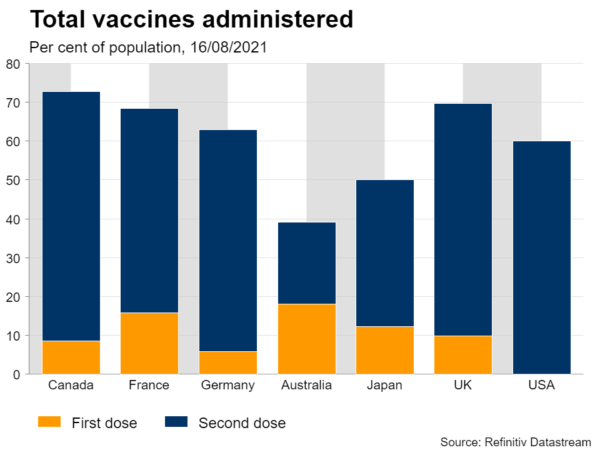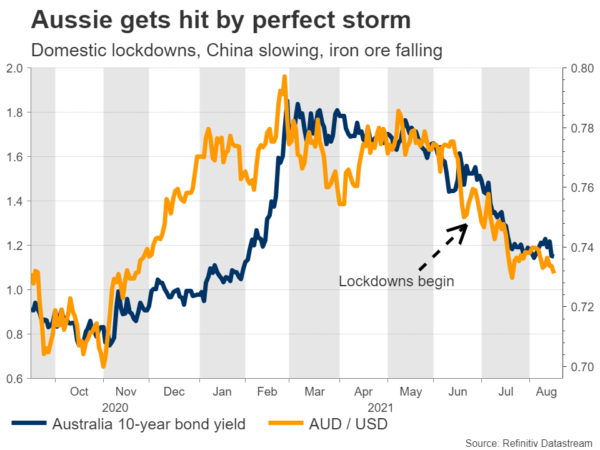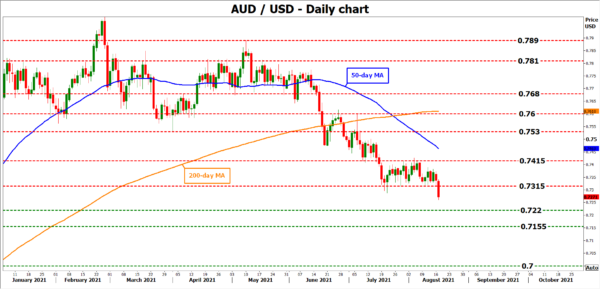It’s a busy week in Australia. The nation’s wage data for Q2 will be released at 01:30 GMT Wednesday before the jobs numbers for July hit the markets at the same time on Thursday. As for the aussie, it has been pulverized lately by a perfect storm of domestic lockdowns, China slowing down, and falling iron ore prices. The currency’s suffering could continue until something drastic changes.
Zero tolerance
It has been a dreadful couple of months for Australia. Most of the country is trapped in a strict lockdown even though virus cases aren’t particularly high. The government is essentially trying to vaccinate around 70-80% of the population before relaxing any restrictions.
That could take months as only 39% of the population has received at least one vaccination dose so far. In the meantime, it is trying to enforce a zero tolerance policy for covid. Even the army has been deployed in some states to ensure people are following the rules.
This will almost certainly kneecap the economic recovery. Consumers being locked at home is grave news for businesses and growth, and that’s without even considering what’s happening abroad. The Chinese economy is also slowing down. Since China is Australia’s biggest customer for its raw materials, this could be a double whammy as exports take a hit too.
Jobs and wages
The upcoming wage numbers probably won’t reflect this pain as the data refer to the second quarter, which is before the lockdowns really started. Wage growth is expected to have accelerated to 1.9% in yearly terms from 1.5% previously, but this dataset will likely be seen as ‘outdated’ by the markets.
Instead, the spotlight will fall on the employment figures for July, which will likely capture the early impact of the shutdowns. Forecasts suggest the economy lost 46k jobs during the month, pushing the unemployment rate up one tick to 5.0%.
This doesn’t sound like much, but then again, the lockdowns only went into full force during the month. The August data will probably provide a much clearer picture of where the labor market and the economy stand.
Can the aussie heal its wounds?
Overall, the Australian dollar doesn’t look attractive at this stage. There’s no telling how quickly the domestic health situation will improve, the economic weakness will probably lead the Reserve Bank to freeze its plans to normalize policy, and the nation’s biggest trading partner is also slowing down.
Indeed, if economic data truly starts to deteriorate, the central bank could even add more stimulus. At the very least, it won’t be raising interest rates next year, like other major central banks are planning.
Add everything up and the pain train for the aussie could continue, at least until the lockdowns are lifted or the global environment improves dramatically. The chart tells a similar story, with aussie/dollar currently carving out new lows for the year.
Taking a technical look at the pair, support to any further declines could emerge from the 0.7220 region. A violation would turn the focus towards the 0.7155 zone.
On the upside, a rebound might encounter resistance around the 0.7315 area. If the bulls manage to overcome it, all eyes would then turn towards 0.7415.















